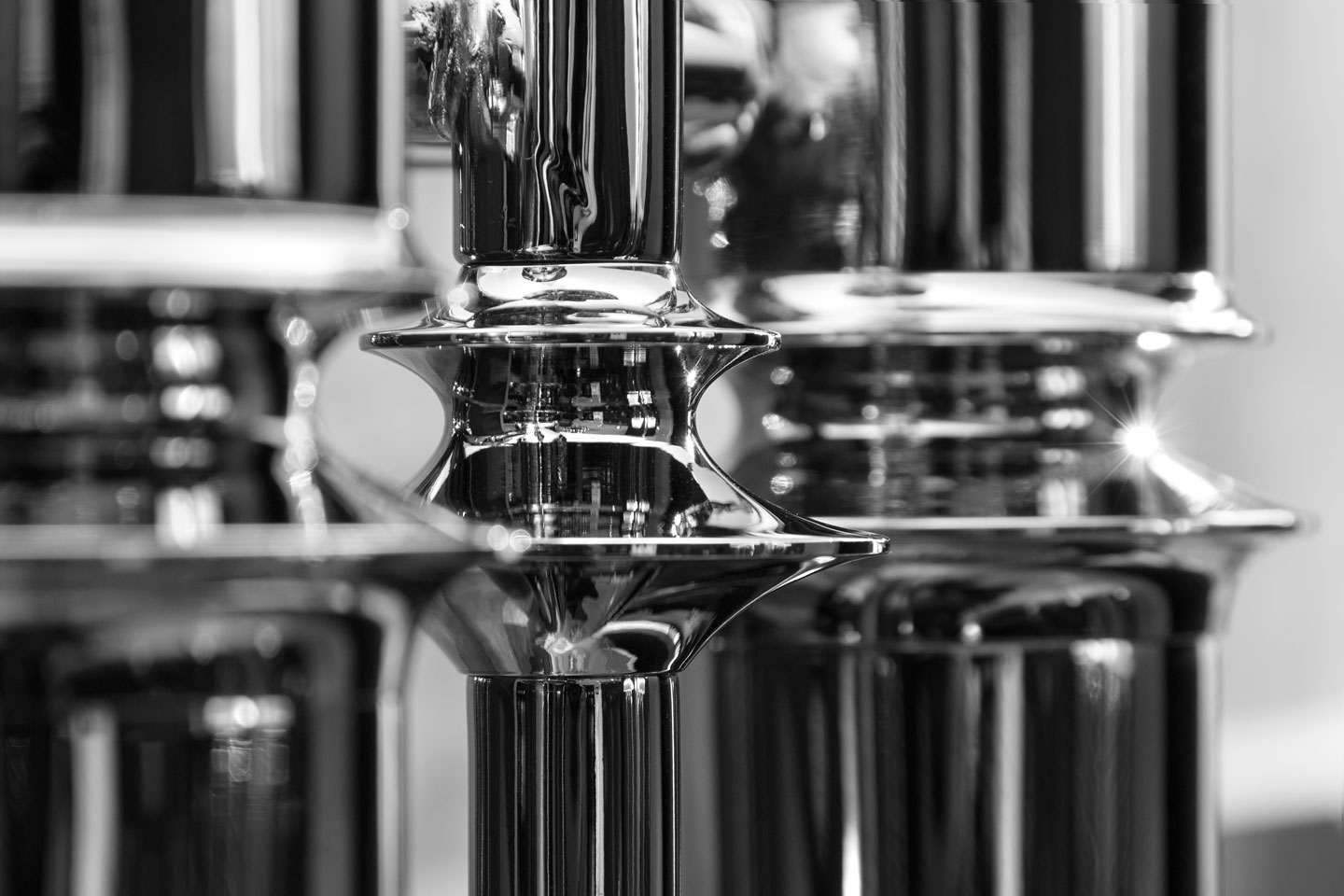Thickness & Crack Patterns of Industrial Hard Chrome Plating
There is no standard thickness for hard chrome plating. Deposits are generally dictated by economics and application performance. A thick deposit of chrome is of value when it provides additional wear surface. In addition, excessive thicknesses are sometimes applied to large rolls where the roll surface can be reground several large times as It progresses through a long wear life and where each regrind operation provides a new wear surface.
The best gauge of a minimum plating thickness is to ask the question "How much wear can this surface stand before it is no longer functional?" There is no reason to apply 0.010 inch of hard chrome if the service life of the area is ended after wear of only 0.0002 inch.
Thin Dense Chrome Plating
Precise control of thickness tolerances can be achieved in a particular type of chrome plating generally referred to as thin, dense chrome. This allows design engineers to improve the performance of metal wear parts measurably altering the micro-inch value of the base wherever the criteria are maximum resistance to abrasion, erosion, galling, cavitation maximum and corrosive resistance wear.to The Electralloy™ plating can be applied in thickness ranges from 0.000025 to 0.0005 inch with a tolerance of ±10%. It eliminates the need for grinding, lapping or honing after deposition, except where high finish reflectivity must be attained. Read more on our exclusive Electralloy™ Chrome Plating.
Advantages of Crack Patterns in Hard Chrome
There are benefits to be derived from the crack patterns in chrome. In high temperature applications or where a chrome plated surface may be deformed due to surface loads, these tiny cracks act as shock absorbers surface permitting the surface to expand or deflect without breaking the bond between the chrome and the base metal.
Chromium crack patterns can be controlled and several different types of porous chrome have resulted. The Channelcromium® process accentuates the crack pattern electrolytic etching which removes the plating at a faster rate in the stress areas of the surface cracks. Careful control of the etching depth creates channels that provide outstanding lubricity when they become saturated with oil.
The porosity of chrome also can be accentuated through mechanical means, such as in the Channelcromium® II process designed primarily for railroad diesel engine cylinder liners.
Properties and Benefits of Industrial Hard Chrome Plating
- Wear & abrasion resistance
- Lubricity
- Hardness
- Durability
- Adhesion & bonding
- Low coefficient of friction in metal parts
- Prevents seizing & galling
- Restores the dimensions of undersized parts
- Extends equipment in-service life, reducing costly downtime
The data and Information presented are based on our experience to date. The material is intended as a guide for use at your discretion. ACME Holdings or its operating divisions assume no liability in connection with this material.

